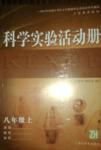题目内容
Shanghai is the largest city in China with well-developed business and industry, and also holds a leading place in China's arts, sciences and education. About eleven million people make their homes in Shanghai. This enormous city spreads out along the banks of the Huang Pu River, which flows into the mouth of the Yangtze River about fourteen miles north.
Shanghai began as a fishing village in the 11th century, but by the mid-18th century it was an important area for growing cotton. After 1842 when China lost the Opium War with Great Britain, the British realized that Shanghai was in an excellent location to serve as a seaport for the densely populated Yangtze River Plain. They forced the Chinese government to allow English traders to settle on the wastelands outside the
city walls. Later, French, American, and Japanese traders also came to Shanghai and were allowed to live in certain territorial zones without being under the Chinese laws. The foreigners built whole new sections of Shanghai, including homes, stores, factories, and office buildings. Thousands of Chinese poured into Shanghai in search of jobs, most of whom settled in the old part of the city. As a result of all the foreigners, Shanghai became greatly influenced by Western culture.
During the 1900s, opium sales along with the gambling brought in big profits. After the Anti-Japanese War in 1945, the Nationalist Chinese government took over the city. In 1949, Shanghai was liberated and administrated under the Communist Chinese government. Since the 1990s, Shanghai has developed quickly and has become a new international metropolis in China and will host the World Expo in 2010.
1. The British first wanted to settle Shanghai because .
A. they wanted to build stores and factories here
B. they thought the place was beautiful and fit for living
C. they realized that it was a very good location for a seaport
D. they wanted to take control of the Yangtze River Plain
2. Which of the following statements about Shanghai in the 1900s is True?
A. It was an important centre for growing cotton.
B. Shanghai was important only, because it was a big seaport city.
C. Opium and cotton sales brought in huge profits.
D. Foreign settlers in Shanghai were free from Chinese laws.
3. What's the main idea of the second paragraph?
A. Shanghai' development into an international city.
B. Certain territorial zones for foreigners in Shanghai.
C. Brief history of Shanghai from the 11th century to the early 20th.
D. The influence of western culture on Shanghai.
4. Which of the following can replace the word "metropolis"(bold in last para.)?
A. seaport city B. big city
C. capital city D. developing city
【小题1】C
【小题2】D
【小题3】C
【小题4】
解析

 科学实验活动册系列答案
科学实验活动册系列答案